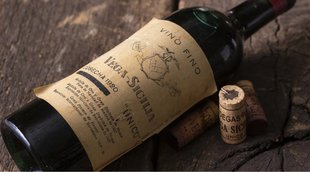Spanish Red Wine (Regions, Prices, Best Wines to Buy in 2025)
Spanish red wines come in various flavors, styles, and prices – from fruity bottles to uncork at your pool-party to age-worthy, collectible labels.
Explore all about Spanish red wines, how they’re made, food pairing, and some of the best ones to add to your wine cellar in 2024. You’ll also find out the easiest way to buy them for drinking or investing.
Further reading
- Discover the 10 Most Expensive Spanish Wines You Can Invest In.
- Explore the Grenache Wine and the Best Bottles to Buy.
- Check out all about Red Wine, its Different Varietals, & 8 Best Bottles for Your Collection.
Spanish Wine Regions & Red Wine Varietals
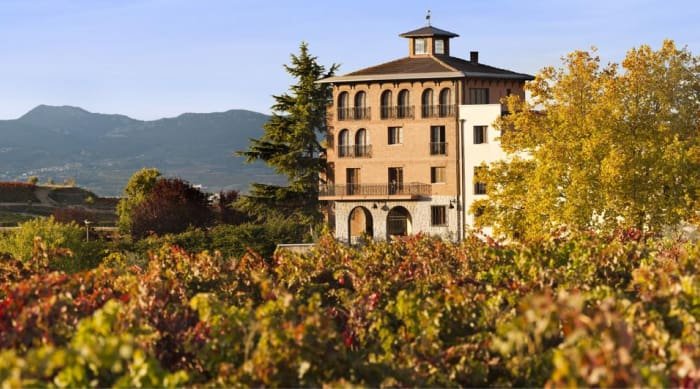
Spain recognizes nearly 138 regions as unique wine-producing regions. Here are some of the best Spanish wine regions and their red wine grape varietals.
1. Rioja DOC
The autonomous communities of La Rioja, Navarra, and Álava make up the Rioja DOC wine region in northern Spain. The winemaking history of this Spanish wine region dates back to the Phoenicians and Celtiberians. Within the region, you can pick Rioja wine from Rioja Alta, Rioja Alavesa, and Rioja Oriental.
Rioja DOC red wine varietals:Tempranillo, Garnacha Tinta, Cariñena, and Graciano.
2. Priorat DOC
Located in southwest Catalonia, Priorat’s viticultural legacy begins with Catholic monks planting vines in seven villages of the region. Priorat gained DOC status in 1954. This slowly led to the discontinuation of bulk production and the introduction of bottling.
Priorat DOC red wine varietals: Garnacha Tinta, Garnacha Peluda, Cariñena, Cabernet Franc, Cabernet Sauvignon, Merlot, and Syrah
3. Rías Baixas DO
This wine region (in the autonomous community of Galicia) is the traditional bastion of Spanish white wine made with the famous Albariño grape. But in recent years, its red wine has also been making headlines. Rías Baixas is known for red wines with an Atlantic feel, low alcohol content, and crisp acidity.
Rías Baixas DO red wine varietals: Caiño tinto, Espadeiro, Loureira Tinta, Sousón, Mencía, and Brancellao
4. Cariñena DO
Home to the grape variety named after them, the Cariñena vineyards are located atop a plateau in the Aragón province. It’s one of Europe’s oldest protecting wine-growing areas and has held a DO status since 1932.
Since the 1990s, the Cariñena region has expanded beyond the high-alcohol wines for local consumption to subtler, more balanced wines for the international markets.
Cariñena DO red wine varietals: Cabernet Sauvignon, Garnacha Tinta, Juan Ibáñez, Cariñena (or Mazuela), Monastrell, Tempranillo, and Vidadillo
10 Best Spanish Red Wines To Buy in 2024
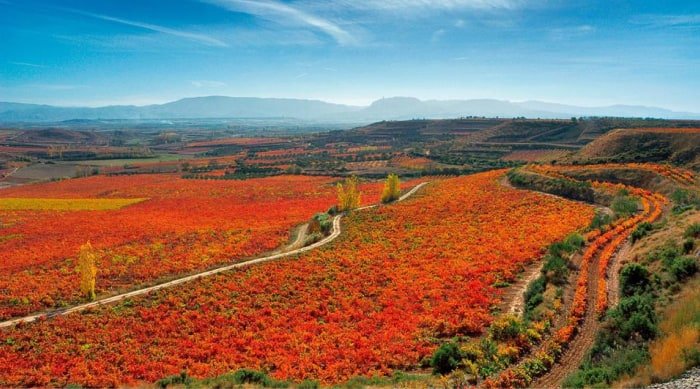
Choose from this list of some of the most delectable and precious bottles of Spain’s finest reds.
- 1995 Dominio de Pingus 'Pingus'
- 2004 Artadi Vina El Pison
- 2009 Descendientes de J. Palacios La Faraona
- 1994 Clos i Terrasses Clos Erasmus
- 2014 Celler Mas Doix '1902' Centenary Carignan
- 2006 Vega Sicilia Unico Gran Reserva
- 1964 La Rioja Alta S.A. Gran Reserva 904
- 2009 Bodegas Muga Aro
- 1997 R. Lopez de Heredia Vina Tondonia Reserva
- 2010 Teso La Monja
1. 1995 Dominio de Pingus 'Pingus' ($1,552)
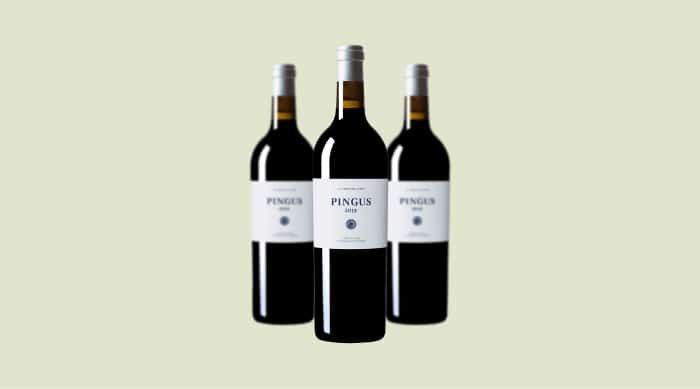
Tucked in the high plateau of Castilla y Leon, the boutique winemaker Pingus shot to fame with their very first vintage in 1995. Buy their first vintage and enjoy blackberry and black olive scents in this succulent wine for another 10 years.
2. 2004 Artadi Vina El Pison ($602)
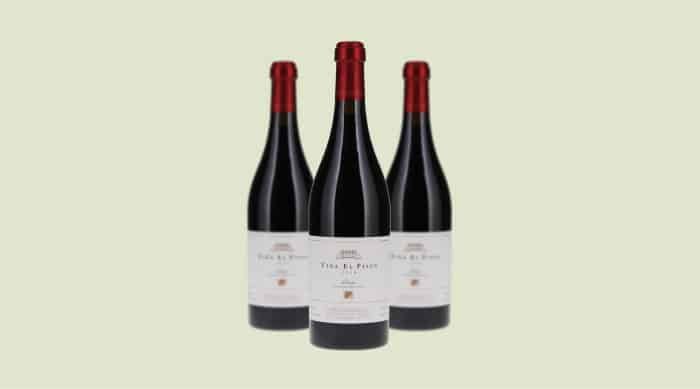
This Rioja vineyard emerged from a collective of 13 growers in 1985 and specializes in Tempranillo and Garnacha wines with smooth tannins. Their 2004, with notes of espresso, balsamic, and Asian spices, is particularly famous for securing a perfect 100 from wine critic Robert Parker.
3. 2009 Descendientes de J. Palacios La Faraona ($1,407)
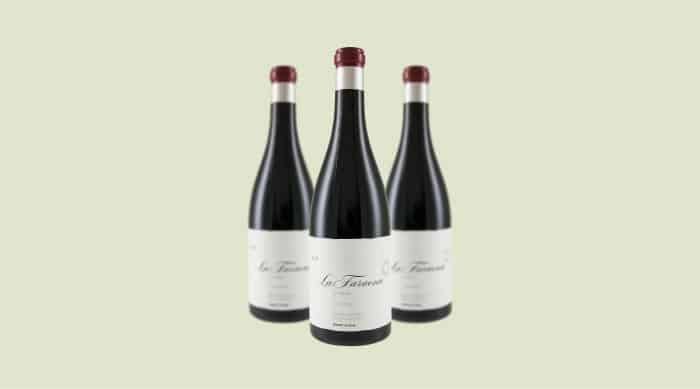
From the hills of Bierzo in northwestern Spain comes this smooth wine made with Mencia grapes. In their 2009 vintage, you’ll instantly pick on the deep aroma of oak layered within the wild forest fruits and spices and a mild palate that lingers on.
4. 1994 Clos i Terrasses Clos Erasmus ($425)
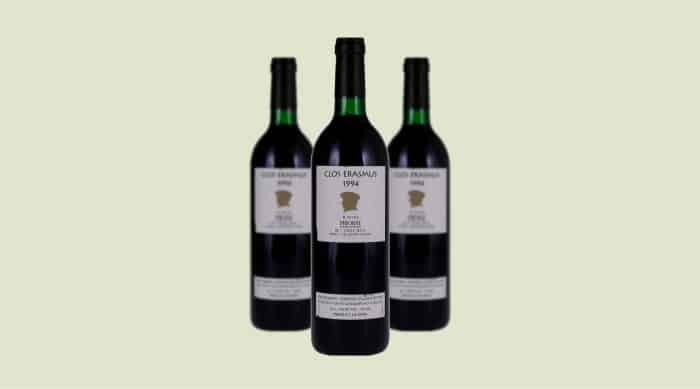
This Catalonian winemaker presents the characteristic Garnacha flavors from Priorat in this spicy and intense wine. Its prominent minerality finds good company with hints of licorice and dark red berries.
5. 2014 Celler Mas Doix '1902' Centenary Carignan ($338)
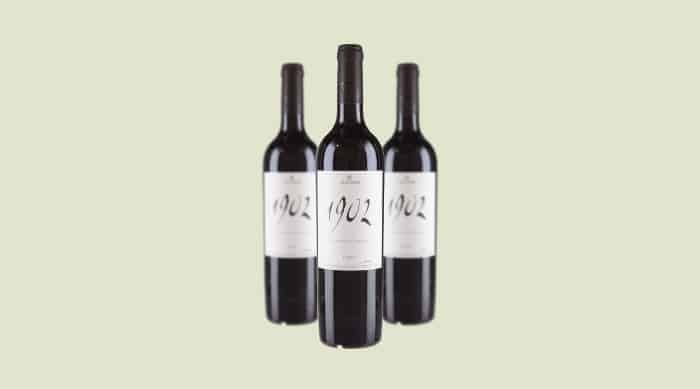
The Centenary collection is Mas Doix's attempt at bringing Priorat’s wine making history to life. This 2014 vintage is made with old vines of Carignan planted in 1902 after Europe’s battle with the phylloxera epidemic. And its bold and expressive notes of blackberry, chocolate, and spices speak for the wine’s rich past.
6. 2006 Vega Sicilia Unico Gran Reserva ($478)
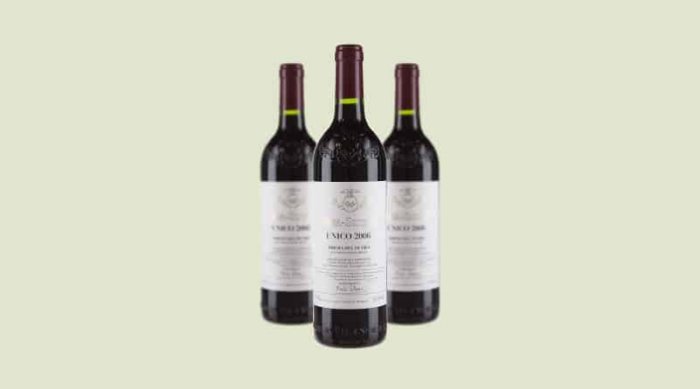
This classic Ribero del Duero wine comes from the finest winemaker in Spain. Vega Sicilia’s Unico range of wines is also one of the most sought after worldwide. Part of its magic lies in the elegance with which the 2006 vintage reveals its creamy texture amid whiffs of American oak.
7. 1964 La Rioja Alta S.A. Gran Reserva 904 ($375)
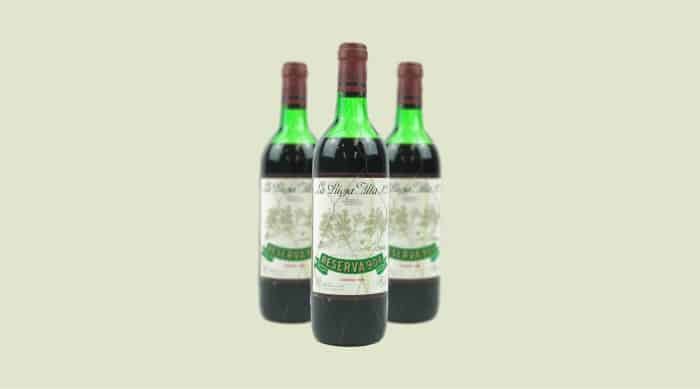
Founded in 1890, La Rioja Alta specializes in red blends that make for an intoxicating experience. In their 1964 vintage, Tempranillo, Graciano, and Macabeo grape varieties take over your senses with the fragrance of crushed flowers and a silky smooth texture on your palate. This Rioja Reserva is truly emblematic of the region’s finest wines.
8. 2009 Bodegas Muga Aro ($255)
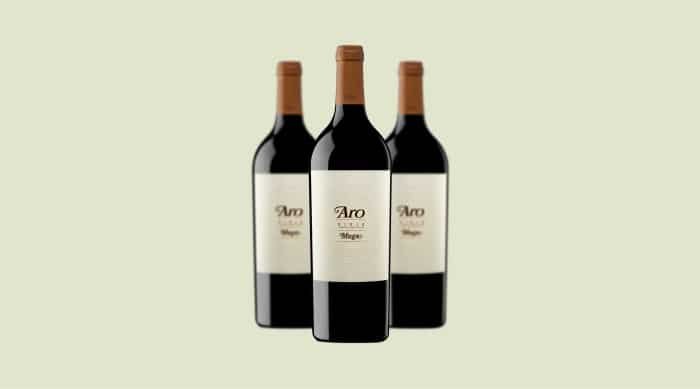
A versatile Rioja blend of Graciano and Tempranillo grape varieties makes up this elegant and robustly tannic wine. In it, the wine drinker will experience the mineral-rich terroir of Rioja Alta along with hints of orange sorbet.
9. 1997 R. Lopez de Heredia Vina Tondonia Reserva ($245)
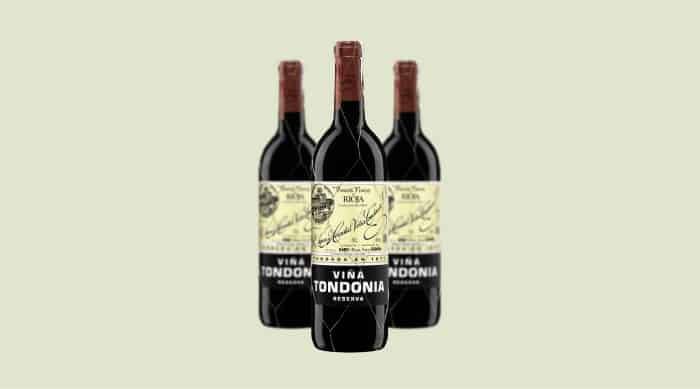
The Heredia estates’ 1997 Rioja blend has been aged in oak barrels where it developed a complex palate of cherry, vanilla, and raspberry. And you can enjoy the ever-evolving flavors of this Reserva for another 20 years!
10. 2010 Teso La Monja ($1,195)
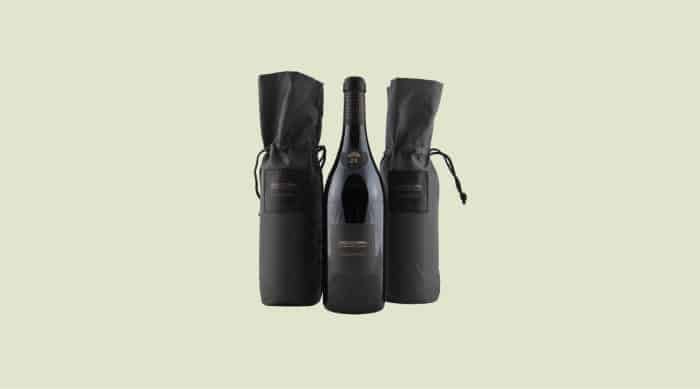
The Toro wine region is famous for its full-bodied red wines made with Tempranillo, also known as Tinto de Toro. Teso La Monja’s 2010 vintage is an excellent expression of this rich and intense style with a cherry red color and the aroma of red fruit.
How Is Spanish Red Wine Made?
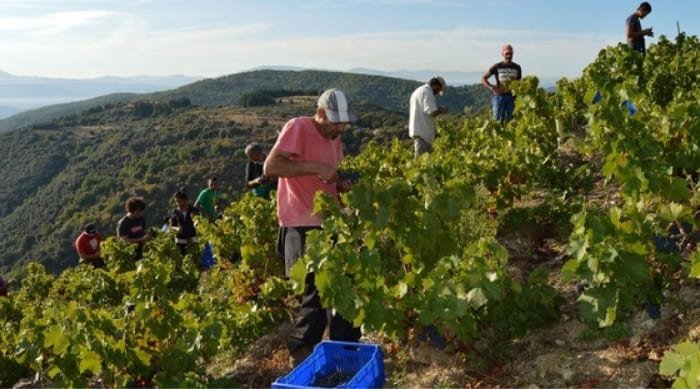
Halfway through the 20th century, Spanish winemakers began experimenting with new winemaking techniques.
For example, they changed the way they regulate the acidity of red wine. In warmer wine regions, Spanish red wine tended to be high on alcohol and low on acidity. Vintners fixed this by adding a dose of white grapes (like Verdejo) that balanced the acidity.
But this compromised on the full-bodied taste of red grapes that formed the wine’s base.
The introduction of temperature control and stainless steel vats radically changed this. It allowed winemakers to arrest fermentation at will and control the sweetness, alcohol, and acidity levels of their wines.
Traditionally, Spanish winemakers stuck to using French oak barrels. (Gran Reserva wines aged in oak barrels are the hallmark of Spanish winemaking.)
But as the industry became more global, the makers embraced Hungarian oak barrels, Eastern European ones, and American oak barrels apart from the trusted French oak barrel.
Wondering what Spanish red wine tastes like?
Tasting Notes For Spanish Red Wine

Tasting Notes for Spanish Red Wine
Let’s explore how the most popular red wine varietals lend themselves to the masterful craft of Spanish red winemakers.
1. Tempranillo wines
In the younger Crianza wines, you’ll find prominent tart and spicy flavors of the Tempranillo grape, also known as Tinto Fino. But aging in oak barrels spikes the wine with sour cherry, vanilla, and cedar flavors that reveal the wine’s sweetness or dryness. To fully experience the Tinto Fino flavors, pick a wine from the Ribera del Duero region.
2. Garnacha wines
This native Spanish varietal (also known as Grenache) offers you a blast of red fruit flavors of strawberry and hibiscus. You’ll also be able to contrast the sweetness with the refreshing notes of black tea.
If you want a blast of tannin, go for Priorat wines that blend Garnacha with Syrah, Merlot, Carignan, etc. These aged wines are bolder and offer complex and mature flavors of grilled plum and crushed gravel.
3. Monastrell or Mourvèdre wines
Take in the masculine flavors of Monastrell wines from the Mediterranean regions of Jumilla, Alicante, and Valencia. This intense grape variety makes wines high in tannin and alcohol content.
4. Bobal wines
Bobal is planted almost exclusively in Spain, and you can pick up black cherry and herb flavors. Bobal grapes make highly acidic and tannic wine that’s low in alcohol content.
Food Pairings with Spanish Red Wine
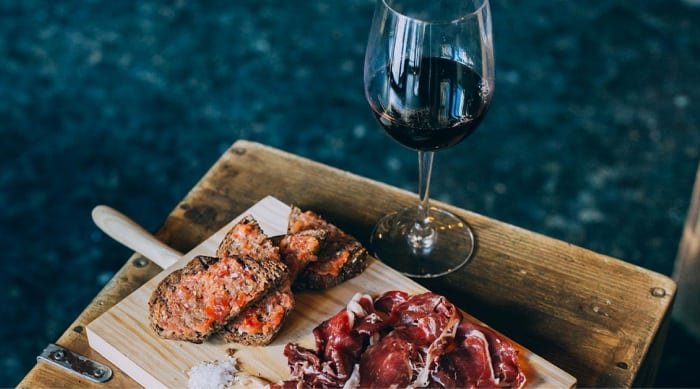
The complex bouquet of aromas and flavors in Spanish red wines means that your choices are endless and delicious!
Pairing Spanish red wines with Tapas (the go-to local bar food) is the easiest way to keep things casual.
You can have younger, lighter red wines with roast pork or a wedge of aged cheese. Chefs recommend pairing Galician reds with Asian cuisine, especially sushi.
But the resonating flavors of Gran Reserva wines deserve a more protein-rich dish like grilled pigeon or fatty, wild game dishes in rich sauces.
It’s also worth looking at Spanish wine in general, a bit of it’s history, and the classification system, too.
All About Spanish Wine
Spain produces hundreds of varieties of red, white, rose, and sparkling wine.
Spain is the third-largest producer of wine, and is home to nearly 400 native grape varieties in 69 major wine regions. In fact, by acreage of vineyards, it’s the most widely planted wine-producing country in the world.
However, most of Spain’s wines are made with 20 grape varieties.
The popular Spanish wine types are fortified wine, Sherry, the Parellada grape-based Cava, and a host of Spanish red wines.
A Brief History of Spanish Wine
Archeologists have found evidence of viticulture in Spain dating back to 4000 BCE. Under Roman rule, Spanish wine was the most widely circulated variety in the empire.
After the decline of the Roman empire, Spanish wine production faced a brief setback. But it returned in full vigor when the native Iberians retook the peninsula.
The Age of Exploration (from 1492 onwards) was the biggest boost to European winemakers. Explorers and conquerors lay claim to new wine-producing regions outside the ‘old world’ of Europe.
Later, Spanish wine was introduced to bigger markets like the Americas. This brought in newer grape varieties and winemaking techniques.
Since the 20th century, the growing use of advanced winemaking techniques has given the industry the boost it deserves.
Denominación de origen: The Spanish Wine Classification System
You may find it tough to select the right Spanish wine if you don’t understand the DO classification system.
The Spanish denominación de origens classification is very similar to the Italian DOCG and French appellations. It classifies wine based on the region it’s made in and regulates its production.
Here are the various categories of Spanish wine, from the highest to the lowest.
- Vino de Pago: These are single-estate wines that are produced and bottled under strictly regulated conditions. They represent the hyperlocal characteristics of their wine region and fetch a high market value.
Notable examples: Pago Aylés, Pago Florentino.
- Denominación de Origen Calificada (DOCa): A wine region with a DO status of at least 10 years can be promoted to the DOCa level, which is the highest Spanish wine classification.
Currently, only Rioja and Priorat hold this elite status. DOCa wine is produced and bottled within the specific region, without exception.
- Denominación de Origen (DO): A wine region is awarded the DO classification after at least five years of observation of its produce. DO wine must comply with regulations regarding grape varieties, winemaking techniques, aging methods, production levels, etc. and is the broadest classification of Spanish wines.
Notable examples: Ribera del Duero, Penedès, La Mancha, Rías Baixas.
- Vino de Calidad con Indicación Geográfica (VC): While still not labeled as a premium DO wine, VC wine is a step above the cheapest varieties of Spanish wine.
- Vino de la Tierra (VT): Wines that belong to a single region but do not comply with the strict regulations of DO or VC statuses are classified as VT.
- Vino de Mesa or Vino: Vino de Mesa (literally ‘wine of the table’ or table wine) is the lowest rung of the Spanish wine classification. They do not belong to a specific region or comply with any stringent production standards.
Spanish Wine Aging Labels
Based on their aging techniques, Spanish red wines can be classified as:
- Crianza: Young wine that’s been aged in oak barrels for one year and another year in the bottle
- Reserva: Slightly more complex wine that’s been aged in oak barrels for one year and two more years in either a barrel or bottle
- Gran Reserva: Rich wine that’s been aged a minimum of five years in oak barrels and bottles. These bottles can age to even over 50 years and some of them are highly collectible and investment worthy.
Now:
We can wax lyrical about the joys of Spanish wine!
But how do you buy the right bottle?
You can pick up immensely popular and critically acclaimed Spanish reds from well-stocked boutique wine shops, wine auctions, or straight from the wineries itself.
But, you might have these questions:
Did I pay the right price? Is this wine authentic? Was it stored in the right conditions?
So, here’s the safest, easiest way to invest in wines, including Spanish reds.
Invest In the Best Spanish Red Wines through Vinovest

Vinovest is an online platform that helps you easily authenticate, buy, and store wines - for drinking and for long-term investing.
You can create a portfolio of the world’s best investment-grade wines that Vinovest helps sell at the best prices as well.
How it works
Follow these four steps:
- Sign up (with your name, email ID, and password) on the Vinovest website.
- Answer questions about your investment preferences and risk appetite.
- Add a $1,000 (minimum investment) to your account.
- Track your wine portfolio online and watch it grow!
Benefits
Vinovest is the one-stop solution to all your wine investment needs. Take a look at its features.
- Easy buying and selling: Leverage Vinovest’s Artificial Intelligence (AI) based online platform to buy and sell wines worldwide in no time.
- Best prices: With Vinovest, you always pay the best, wholesale prices for all your purchases because it sources the wine from wineries, wine exchanges, and merchants directly.
- Provenance and authenticity: Vinovest traces your bottle’s provenance and authenticity beforehand so you can enjoy it knowing it's a genuine one.
- Curated portfolio: With proprietary financial models and the advice of Sommeliers, your wine portfolio will be carefully curated with some of the world’s best wines!
- Optimal storage: Vinovest’s bonded warehouses protect the value and taste of your favorite Champagne or Spanish wine in the right light, humidity, and temperature conditions.
- Insurance: Vinovest’s comprehensive insurance policy that covers both breakage and loss.
- Access to a global network: You’ll benefit from Vinovest’s extensive network that’ll update you on private winery sales, limited releases, and exclusive access to all the latest developments in the wine industry.
- Ownership: Store, sell, or drink it. You own every single bottle in your Vinovest portfolio!
- Easy delivery: Vinovest will deliver your Montrachet, Beaujolais, Bordeaux, or Spanish wine to your doorstep or to your buyer’s home whenever you want.
Add an Exquisite Spanish Red Wine to Your Collection
From the lively young red wine to the noble Gran Reservas, Spanish red wines cover you for every occasion in life.
If only choosing the right wine, storing it, and selling it for a profit was as easy as enjoying the buoyant aromas of a Pinot Noir! Thankfully, you have the option of navigating the world of wine investment with a trusted team like Vinovest - in a hassle-free manner.
Just sign up with Vinovest today and start adding all your favorite wines to your portfolio!
